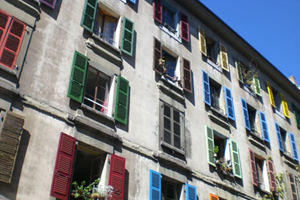Fall 2009 Letters
Another Lisbon connection
I was very pleased with the “Lisbon Connection” in the Cornell Report written by journalism students of Mike Conklin ’69. The photography was flattering too. But there was one other very important connection between Cornell and Lisbon—the boardwalk between the two towns.
In my reading of several of the old families from Lisbon, many of their children attended the Cornell Academy and College. The walk was important to those students who traveled it daily to the classes on campus. It was also well used as “Lover’s Lane.”
There is now a cement walkway between the towns used more by daily walkers or for walking their dogs, not going to college.
Jean Minish Stoner ’41
Mount Vernon, Iowa

Hendriks outstanding in his field
I enjoyed the Summer 2009 issue of the Cornell Report, and especially the recognition of Professor Emeritus Herbert Hendriks ’40 for his early and continuing support of the environmental studies program at Cornell College.
I was a geology major who studied under Dr. Hendriks in 1952–54 and, after serving in the Armed Forces, continued in the field at what was then the State University of Iowa in Iowa City, now the University of Iowa. Later I completed a Ph.D. in environmental education at Cornell University and taught in the field at the University of Wisconsin- Green Bay for the next 25 years, retiring in 1996.
Herb Hendriks was an early advocate of environmental awareness, as well as being an excellent teacher and a very fine person. Countless Cornell College students and others are beneficiaries of his service and teaching.
Richard W. Presnell ’56
Fish Creek, Wis.
Save Sutliff Bridge
When my wife, Mary Foster Freese ’50, and I graduated from Cornell, our good administration on the Hilltop had a favorite saying: “No beer here, and no beer near here.” And to comply with the puritanical ruling of the college, we had to party out of town. Whenever a weekend party was brewing or one of the social groups had an outing, Sutliff Bridge was the answer.
The designated wagonmaster would purchase the food and the beverages and make arrangements with the keeper of the keys (who also owned the Sutliff store and tavern) to open the gate leading to the woods on the west side of the bridge. And the partying would begin, without fear of being caught because the bridge provided us with its own warning system: when a car crossed the bridge, the vibration sent the planks shivering in their spot, creating a noise you could hear for a half mile.
Almost every member of the fraternities and sororities was initiated into the mystique of the Sutliff Bridge. And I think you can understand our feelings toward this landmark. Our classmates are now in their 80s, and we all try to hang on to any good memories we have.
Baxter Freese ’49
Iowa City, Iowa
Editor’s note: One-third of Sutliff Bridge washed away in the 2008 floods, and Johnson County supervisors are determining whether to demolish or rebuild. The estimates to rebuild range from $1 million to $1.7 million. About $1.4 million in federal and state money has been committed.



